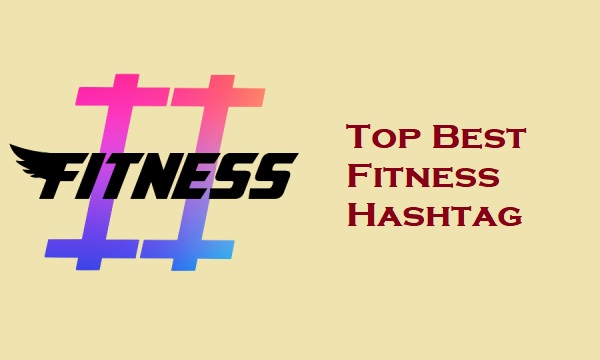What is Vector Search?

Vector Search helps you find similar objects with similar characteristics by using ML models. These ML models help to detect semantic relations between objects.
Vector Search recommendations are becoming very common nowadays. If you wish to create an image search, include natural language on the site, or construct a recommendation system, you will need to use Vector Search
As for now, scaling and building vector search might seem to be only available to big companies like Netflix, Amazon, and Google. These giants have hired a bulk of data scientists, and engineers. Some have even made their exclusive computer chips to get faster ML.
However, at present, any firm can easily deploy vector-powered recommendations and search in a short time and minimal price. These vector technologies uncover a new era for developers to make solutions that provide recommendations, better search, and prediction solutions.
How Does a Vector Search Engine Work?
There are various ways to evaluate Vector search. The simplest approach is a cosine similarity match. It is good, but very slow.
Other advanced approaches use different indexing to speed up the process of information retrieval. For instance, we can take a book as an example for indexing. A geometry book has an index. You can search for the word “Vector”, find that page, and flip to it. It is a very fast process than going through the whole book.
Indexing a large document will help you the same. You will have a list of topics and where you can find these topics in your doc. When you conduct a query, you can quickly find the info that matches your search.
Vector search has various indexing like Nearest Neighbor Index. NNIs club similar vectors and make tiny paths to vectors that aren’t similar. If we consider the same book example, an NNI is a kind of “see also” option in your book’s index.
Applications of Vector Search
Vector search has various applications across different areas because of its ability to find similarities between items in high-dimensional spaces efficiently. Here are a few applications of Vector search:
Image and Visual Search
Image databases can utilize vector search to find visually similar images. This is employed in reverse image search engines, content-based image retrieval, and even for identifying copyright infringement of images.
Information Retrieval and Search Engines
Vector search is commonly used in text-based search engines to retrieve documents, articles, and web pages that are similar to a user’s query. It helps improve the accuracy of search results by considering semantic similarities and context.
Anomaly Detection
In various fields such as network security, finance, and manufacturing, vector search can be used to detect anomalies or outliers by identifying data points that are significantly different from the rest.
Genomic Analysis
In bioinformatics, vector search can be used to compare genetic sequences, identify common patterns, and assist in genetic research and diagnosis.
Recommendation Systems
Vector search is essential for building personalized recommendation systems. It helps suggest products, movies, music, or content that matches a user’s preferences based on the similarities between users and items.
Natural Language Processing (NLP)
In NLP, vector search is used for semantic search, where documents are retrieved based on their semantic meanings rather than just keyword matching. It’s also used in chatbots and virtual assistants to understand and generate contextually relevant responses.
Fraud Detection
In finance, vector search can identify patterns and anomalies in transaction data, aiding in fraud detection by pinpointing unusual or suspicious activities.
Drug Discovery
In pharmaceutical research, vector search can assist in identifying potential drug candidates by comparing molecular structures and chemical properties.
Machine Learning Model Retrieval
In machine learning, vector search can aid in finding similar models or datasets, enabling knowledge sharing and transfer across different projects.
Geospatial Analysis
For geographical and spatial data, vector search can be used to find locations, routes, and geographic features that are similar or closely related.
Content Plagiarism Detection
Vector search can help identify plagiarized content by comparing textual or multimedia documents to a database of known content.
Audio and Music Retrieval
Vector search can help in finding similar audio clips, making it useful for applications like music recommendation, sound classification, and audio content matching.
What is a Vector Database?
There are different types of information in the world. Some of them are structured and others are unstructured. Structured information includes graphs, tables, and logs. Unstructured information includes audio, text documents, and rich media.
Innovations in AI and ML have enabled us to make embedding models(Type of ML model). Embeddings cipher all types of data into vectors. These vectors catch the context and meaning of the data. This allows us to search for similar assets by looking for neighboring data points.
Vector database allows us to store and retrieve vectors as HD points. They enhance the capabilities for fast and efficient lookup of closest neighbors in the N-dimensional space. They are powered by k-NN indexes and made with algorithms such as IVF and HNSW.
How does a vector database work?
The traditional databases store numbers, strings, and other scalar data in rows and columns. A vector database works on vectors, so their way of work is a bit different. It uses various combinations of algorithms that take part in ANN search. These algorithms optimize the search through quantization, graph-based search, or hashing.
These algorithms fit together in a pipeline that allows you faster retrieval of the neighbors of a queried vector. As the vector database gives approx result, the trade-offs we consider are between speed and accuracy. Accuracy is inversely proportional to speed.
The most common pipeline for vector database include:
- Post Processing: In a few cases, the vector database gets back the nearest neighbors from the dataset and post-process them to get the final output. This include re-ranking the closest neighbor using various similarity measure.
- Indexing: The process of indexing in the vector database involves employing algorithms like PQ, LSH, or HNSW (further explanations on these are provided later). This stage facilitates the mapping of vectors onto a data structure designed to expedite search operations.
- Querying: In the querying phase, the vector database evaluates the indexed query vector against the indexed vectors stored in the dataset. The goal is to identify the closest neighbors, applying a similarity metric pertinent to the specific indexing technique utilized.
Applications of Vector database
It provides various capabilities like fault tolerance, access control, and data management. Here are a few additional applications of Vector database.
Image recognition
Vector database helps us to identify visually related videos or images using attributes that are extracted from the vector representations.
Recommendation Systems
Vector databases play a pivotal role in providing personalized recommendations by facilitating effective matching of similarities based on user preferences, item attributes, or content relatedness.
Enhancement of Machine Learning Models
Vector databases contributes to the storage and retrieval of model embeddings, thereby bolstering the performance of machine learning models and generative AI systems.
Natural Language Processing (NLP)
Within NLP applications like document comparison, sentiment analysis, and semantic search, vector databases hold a critical function. They ensure streamlined indexing and retrieval of textual data represented as word embeddings or sentence vectors.
Anomaly and Fraud Detection
Across diverse domains including network traffic analysis, fraud detection, and cybersecurity, vector databases possess the capability to detect anomalies. By gauging data points against established behavioral norms, deviations can be pinpointed based on the divergence from typical vectors.
Clustering and Classification
Vector databases facilitate rapid similarity-based grouping of data points, thus supporting tasks like clustering and classification.
Graph Analytics
Vector databases find utility in graph analytics undertakings such as identifying communities, predicting links, and matching graph similarities. They enable efficient storage and retrieval of graph embeddings, resulting in improved analytical outcomes.




